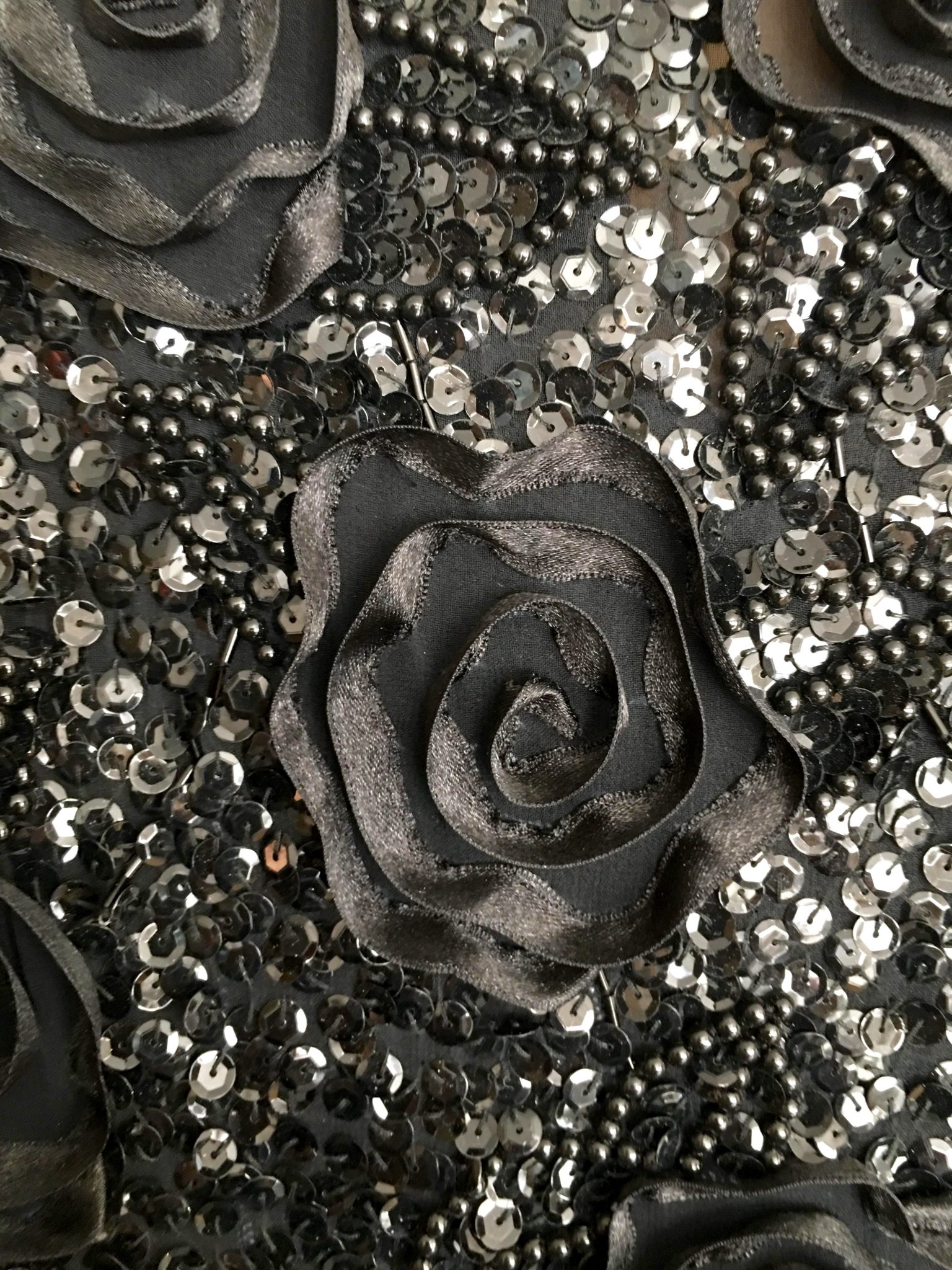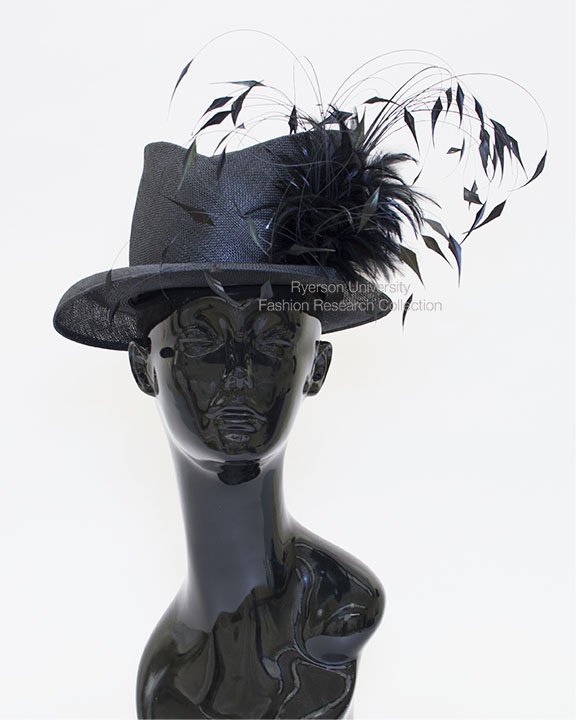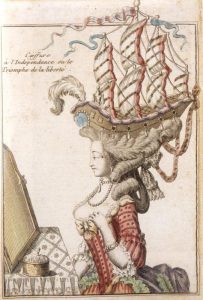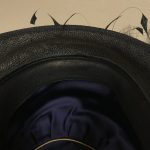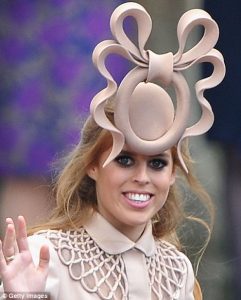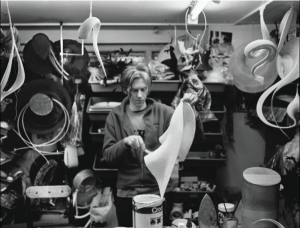“Grandma, can you show me your favourite outfit?”
She and I stand there silently in the middle of my grandparents’ bedroom. I can tell she is thinking by the way her eyes remain fixed on mine. Then, with her index finger raised to the sky, my grandmother turns toward the doors of her shiny black armoire—the one with the floor length mirror that I as a young girl would watch her rotate in front of as she dressed for the day.
My grandmother has been a style icon of mine since childhood. I think it’s because of her unapologetic sense of fashion. Even at 82-years-old she isn’t shy to pair a cheetah-print sweater (tasteful, of course) with denim jeans and her signature gold hoop earrings. Glam is her thing. Some of my earliest memories include sitting at the kitchen table of my grandmother’s home while she painted my nails—always a bright red. Have you ever seen a four-year-old with red painted nails? Not incredibly common.

I move toward her as she flips through her collection of dresses—some new pieces, but mostly old. As my grandmother separates each piece by the hanger she analyzes them, sometimes smoothing her hand over them as though she is admiring each dress for the first time. Or perhaps she is reflecting on some old memories. This must be a difficult choice for her, I think. All of the dresses are stunning and hold sentimental value. I recognize many of them from old photographs of birthdays, anniversaries, baptisms, and weddings, but one dress in particular catches my attention. When she pulls it out, I get excited.
“I wore this to your mom’s wedding,” my grandmother says.


She holds up the all black evening gown, adorned from top to bottom with beads, silk rose appliqué, and a plethora of sequins that scream “Look out, people! Mother of the bride coming through.” Up close, the beads form an outline of leaves emerging from each silk rose. At the back, a slit runs up the middle of the dress allowing room for comfortable movement with a touch of flair. The shoulders are padded, leaving the half sleeves to drape down elegantly. There is practically no wear on the dress, save for some wrinkles on the lining and loose thread that once held beads to the hem, most likely forgotten on the dance floor. The label sewn onto the lining reads “Magnifique,” a brand once carried by Mario Rossi, the now defunct dress and accessories boutique where my grandmother purchased the gown over two decades ago. Holding the gown myself, I can feel the weight of its details. The sequins, by far the defining feature of the dress, are rough against my fingertips. Catching the light of the room, they sparkle.
For my grandmother, the sequinned gown, like all cherished possessions giving meaning and continuity to one’s life (Prentice 993), will forever remain a fond memory of her daughter’s wedding; for me, it is a gorgeous reminder of not only my grandmother’s striking style, but also her charismatic personality. Unsurprisingly, it is one of the few glitzy pieces that hang in her armoire. Today, sequinned dresses are usually appreciated for their excess and spectacle—stores filled with New Year’s Eve party dresses during the holidays comes to mind; however, the sequin dress has a long cultural history in women’s fashion that reveals how this trend, like all ‘things’ as Igor Kopytoff posits, possesses a social life and biography of its own, in relation to its wearers (68).

In October of 1967, an article was published by Women’s Wear Daily titled “Sequins are Always in Style.” The article details dresses featured in a $50,000 display at the Metropolitan Museum of Costume Art. In all the dresses from over two and a half centuries, the most predominantly featured were composed of sequins. Of these, none, according to the author Eugenia Sheppard, made more of a spectacle than Chanel’s 1920 black sequinned shimmy dress (pictured left) (1967). It was a dress of such impact that “no frozen-faced mannequin [could] destroy,” she writes, perhaps for its lush use of sequin detail that no doubt shimmered under the electric lighting at clubs and dance balls of the time.

The 1920’s marked the dawn of the New Woman. Not only were women able to work and vote, but also express their promiscuity and intellect through loosely structured, embellished dresses that simultaneously set their limbs free and added excitement to their attire (Nesmith 2017). Flappers, like the one depicted by the Chanel mannequin, characterized the period with their shorter skirts, shorter hair, more comfortable undergarments, faces of makeup, and smoking and drinking habits (Freedman 378). During this time, Lev Bakst, costume designer for the Ballet Ruses, designed a decadent sequin-covered dress trimmed with feathers for ballet dancer Anna Pavlova in her revered role as the Dying Swan in Swan Lake (pictured right). The feathered sleeves and skirt are reminiscent of a swan’s feathers while the sequins point to their elegance. In this way, the flapper’s dress, as a representation of women’s newfound agency during the time, and Pavlova’s costume, as a material reflection of her swan character, allowed for a corporeal experience whereby the women, through wearing these garments, were able to embody their clothing and its symbolic and culturally constructed meaning (Negrin “Maurice Merleau-Ponty”).

The use of sequin detail on dresses was passed down from the use of small reflective pieces of metal in popular Plimouth waistcoats of the 17th century worn by women of the court—a trend which continued into the 19th century with the use of metal pieces for dresses, bonnets, and other jackets (Spivack 2012). According to the Women’s Wear Daily article, women’s sequinned ball gowns were a common outfit in the Victorian era as well, and regarded as a symbol of wealth and prestige (Sheppard 1967). That said, the discovery of gold sequin-like disks sewn onto the burial garments of King Tutankhamen (1341 B.C.-1323 B.C.) in 1922 is what led to an exponential growth in sequin dresses during the time. It is presumed these disks were sewn onto his garments in order to ensure the king was both financially and sartorially prepared for the afterlife. In fact, the etymology of the word sequin derives from the Arabic word sikka, meaning ‘coin’ (Spivack 2012). In Egypt, India, and Peru, sequined clothes were considered “ostentatious displays of wealth,” and their sheen doubled as protection from evil spirits (Spivack 2012). Similarly, in Morocco, Anatolia, and Haiti, sequins have been used to ward off the evil eye (Rivers The Shining Cloth) . In Morocco, sequins (muzun) were sown onto small looped strings that dangled off of items like saddle-bags (ssmatt) and woolen cloaks (hendira), providing them with a sparkle that simultaneously protected wearers from harm (Rivers 95). In Turkey, the clothing of bridal couples and young girls, considered especially vulnerable to the evil eye, are trimmed with sequins in order to protect their fertility while doubling to provide a celebratory appearance (Rivers 98). The glinting light of sequins used in Haitian clothing and sequin art (pictured above) are meant to “evoke the energies” of the Vodou deities that act as mysterious governing forces of the world, summoning them to heal and protect its people (Rivers 102).

The association between wealth and clothing continued to thrive in the 18th century. Gold and other precious metals were sewn onto clothing, which was considered an indication of status, as well as a means of preventing theft and providing spiritual guidance. One of the first sequin dresses was that of the leather war dress (pictured left), on which coins and buttons were sewn (Spivack 2012). This ‘sequin’ dress became a corporeal experience much in the same way the flapper dress was for women of the 1920’s. Through wearing this sequinned attire, the wearer subsequently adopted its visual radiance and culturally constructed function.
With the invention of electroplate gelatin in the 1930’s, the metal disk sequins of the 1920’s were replaced by gelatin sequins (Spivack 2012). If wet or too warm, the sequins would melt, leaving marks on women’s dresses where the warm, clammy hand of a dance partner would melt away at the decoration. This material posed an issue until it was replaced by vinyl plastic, which is the material used for sequin garments today (Spivack 2012); these come in a variety of finishes such as fluorescent, variegated, and laser foil, and some are cupped to reflect more light like the sequins that make up my grandmother’s dress (Spivack 2012). That said, the signs of wear from gelatine sequins have become a source of material culture analysis. On a dim note, celluloid sequins, also used during the ’20s and ’30s, were the cause of a number of deadly fires. As Alison Matthews David notes in Fashion Victims: The Dangers of Dress Past and Present, the rise in popularity of celluloid subsequently led to the production of “cheaper, less chemically stable compositions” that burned at the mere proximity to fire (194).

Sequins have been a spectacle on the red carpet for decades—think Barbara Streisand’s sequinned pant-suit at the 1969 Oscars, and Cher’s famed sequinned ensemble and matching feathered headdress by Bob Mackie in 1986. This year at the 2018 Golden Globe Awards, sequins provided a decorative and celebratory touch to the black dresses worn by some of Hollywood’s leading women in support of the Me Too Movement. Actresses like Kerry Washington (in Prabal Gurung), Octavia Spencer (in Tadashi Shoji), Margot Robbie (in Gucci), and the first ever host of the show, Kristen Bell (in Jenny Packham, pictured right) all wore black gowns with sequin detail to the event. While sequins were not a mandatory component of the Me Too dress code, their sparkle brought attention to these black dresses, thereby adding to the importance of the campaign. As Igor Kopytoff claims, the production of commodities is a cultural and cognitive process, meaning commodities must not only be produced for material purposes as ‘things,’ but also culturally marked as a certain kind of thing (The Cultural Biography of Things 83). In this regard, the sequinned gowns worn by these celebrities become more than sequinned gowns. The act of standing in solidarity with victims of sexual assault while wearing these garments attaches new meaning to them and, by extension, the history of the sequinned gown, its place in women’s fashion, and its relation to society at large.

Thus, the sequinned dress continues to have a significant impact on the history of women’s fashion. In this way, the sequin dress serves as part of a cherished collective memory that deserves to be recognized as such, despite the emphasis on spectacle that tends to overshadow it.
Before I leave my grandmother, I thank her for showing me the dress. Her response is warming: “You know, one day it’ll be yours.”
Note: The “Checklist for Observation” from Ingrid Mida and Alexandra Kim’s The Dress Detective was consulted in order to form the sartorial description of my grandmother’s dress.
Discussion Question • Does knowing the history of a garment allow us to appreciate it more, or do our personal tastes ultimately take over?
Works Cited
Freedman, Estelle B. “The New Woman: Changing Views of Women in the 1920s.” The Journal of American History, vol. 61, no. 2, 1974, pp. 372–393. JSTOR, www.jstor.org/stable/1903954.
Kopytoff, Igor. “The Cultural Biography of Things: Commoditization as Process,” in Arjun Appadurai, The Social Life of Things, Cambridge University Press, 1986, pp. 65-91.
Matthews David, Alison. Fashion Victims: the Dangers of Dress Past and Present. Boomsbury Visual Arts. Bloomsbury Publishing, 2017.
Mida, Ingrid, and Alexandra Kim. The Dress Detective a Practical Guide to Object-Based Research in Fashion. Bloomsbury Academic, 2015.
Nesmith, Meghan. “A History of Sequins from King Tut’s Tomb to Your New Years Eve Outfit.” Racked, 28 Apr. 2017, www.racked.com/2017/4/28/15345696/sequin-history.
Prentice, Deborah. “Psychological Correspondence of Possessions, Attitudes, and Values.” Journal of Personality and Social Psychology 53.6 (1987): 993-1003.Web.
Rivers, Victoria Z. The Shining Cloth: Dress & Adornment That Glitters. Thames & Hudson, 2003.
Rocamora, Agnes, and Anneke Smelik, editors. “Maurice Merleau-Ponty: The Corporeal Experience of Fashion.” Thinking through Fashion: a Guide to Key Theorists, by Llewellyn Negrin, I.B. Tauris, 2016, pp. 115–131.
Sheppard, Eugenia. “Inside Fashion.” Women’s Wear Daily, vol. 115, no. 206, Oct 24, 1967, pp. 6, ProQuest, http://ezproxy.lib.ryerson.ca/login?url=https://search- proquest.com.ezproxy.lib.ryerson.ca/docview/1523594628?accountid=13631.
Spivack, Emily. “A History of Sequins from King Tut to the King of Pop.” Smithsonian.com, Smithsonian Institution, 28 Dec. 2012, www.smithsonianmag.com/arts-culture/a-history-of-sequins-from-king-tut-to-the-king-of-pop-8035/.
